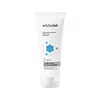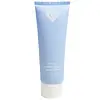What's inside
What's inside
 Key Ingredients
Key Ingredients

 Benefits
Benefits

 Concerns
Concerns

 Ingredients Side-by-side
Ingredients Side-by-side

Water
Skin ConditioningGlycerin
HumectantPolysorbate 20
EmulsifyingCetyl Alcohol
EmollientCetearyl Alcohol
EmollientDisodium Cocoyl Glutamate
CleansingButylene Glycol
HumectantPEG-40 Hydrogenated Castor Oil
EmulsifyingPolyacrylamide
Cocamidopropyl Betaine
CleansingC13-14 Isoparaffin
EmollientC9-11 Pareth-6
EmulsifyingAvena Sativa Kernel Extract
AbrasiveAvena Sativa Kernel Flour
AbrasiveOryza Sativa Bran Extract
Skin ConditioningInositol
HumectantChamomilla Recutita Extract
Skin ConditioningHydroxypropyl Methylcellulose
Emulsion StabilisingDMDM Hydantoin
PreservativeSodium Hyaluronate
HumectantSodium Lactate
BufferingParfum
MaskingCitric Acid
BufferingBisabolol
MaskingWater, Glycerin, Polysorbate 20, Cetyl Alcohol, Cetearyl Alcohol, Disodium Cocoyl Glutamate, Butylene Glycol, PEG-40 Hydrogenated Castor Oil, Polyacrylamide, Cocamidopropyl Betaine, C13-14 Isoparaffin, C9-11 Pareth-6, Avena Sativa Kernel Extract, Avena Sativa Kernel Flour, Oryza Sativa Bran Extract, Inositol, Chamomilla Recutita Extract, Hydroxypropyl Methylcellulose, DMDM Hydantoin, Sodium Hyaluronate, Sodium Lactate, Parfum, Citric Acid, Bisabolol
Ingredients Explained
These ingredients are found in both products.
Ingredients higher up in an ingredient list are typically present in a larger amount.
Avena Sativa Kernel Extract is is derived from colloidal oatmeal. Besides being a healthy breakfast, oats have many benefits in skincare too.
This ingredient helps sooth, hydrate, and protect the skin. The starches in colloidal oatmeal are able to bind water, keeping the skin hydrated.
The cellulose and fiber in colloidal oatmeal help reduce inflammation. This can also help the skin feel softer.
Colloidal Oatmeal is also an antioxidant. Antioxidants protect our skin from free-radical damage.
Oatmeal also contains beneficial compounds:
This ingredient is created by mixing grounded oatmeal and a liquid base.
Learn more about Avena Sativa Kernel ExtractCocamidopropyl Betaine is a fatty acid created by mixing similar compounds in coconut oil and dimethylaminopropylamine, a compound with two amino groups.
This ingredient is a surfactant and cleanser. It helps gather the dirt, pollutants, and other impurities in your skin to be washed away. It also helps thicken a product and make the texture more creamy.
Being created from coconut oil means Cocamidopropyl Betaine is hydrating for the skin.
While Cocamidopropyl Betaine was believed to be an allergen, a study from 2012 disproved this. It found two compounds in unpure Cocamidopropyl Betaine to be the irritants: aminoamide and 3-dimethylaminopropylamine. High-grade and pure Cocamidopropyl Betaine did not induce allergic reactions during this study.
Learn more about Cocamidopropyl BetaineWe don't have a description for Disodium Cocoyl Glutamate yet.
DMDM Hydantoin has antimicrobial and antifungal properties. It is a preservative that works by slowly releasing formaldehyde over time.
So what's formaldehyde?
DMDM Hydantoin is approved for use in cosmetics all around the world.
In the EU, this ingredient is allowed in personal products up to 0.6 percent.
You might have heard of the class-action lawsuit about it causing hair loss. According to chemists, there has not been a link found between this ingredient and hair loss.
The Hydantoin part of this ingredient is created by reacting glycolic acid and urea.
You can check out alternatives to Dmdm Hydantoin:
phenoxyethanol, potassium sorbate, and sodium benzoate.
Polysorbate 20 is made by combining ethoxylation of sorbitan, ethylene oxide, and lauric acid. It is a mild cleansing agent, surfactant, and emulsifier.
As a surfactant, it helps collect dirt and oils for washing. Emulsifiers prevent oils and water from separating.
Polysorbate 20 also adds scent to a product. Since it is made using sorbitol, it has a sweet scent. Sorbitol can also be found in fruits such as apples and peaches.
The lauric acid used to create Polysorbate 20 is often derived from coconuts.
Polysorbate 20 may not be fungal acne safe.
Learn more about Polysorbate 20Water. It's the most common cosmetic ingredient of all. You'll usually see it at the top of ingredient lists, meaning that it makes up the largest part of the product.
So why is it so popular? Water most often acts as a solvent - this means that it helps dissolve other ingredients into the formulation.
You'll also recognize water as that liquid we all need to stay alive. If you see this, drink a glass of water. Stay hydrated!
Learn more about Water